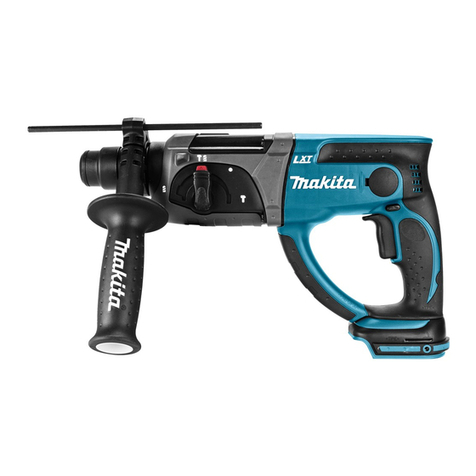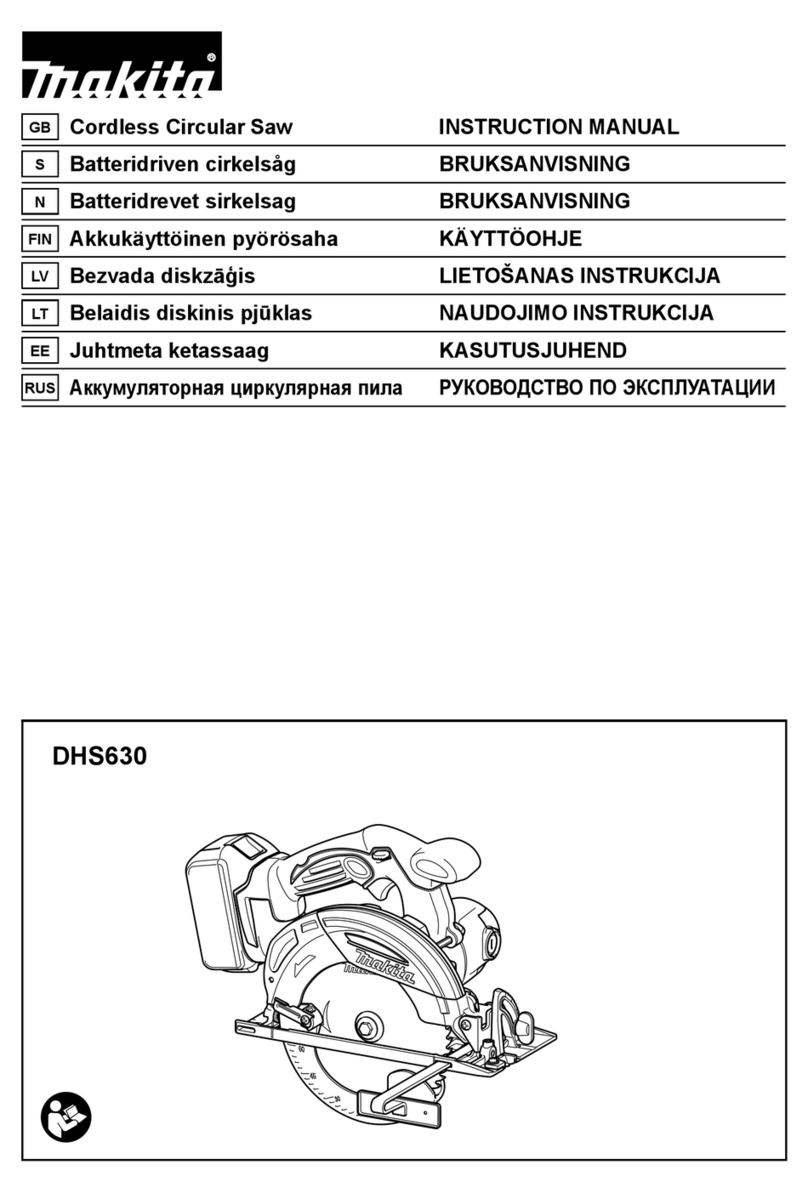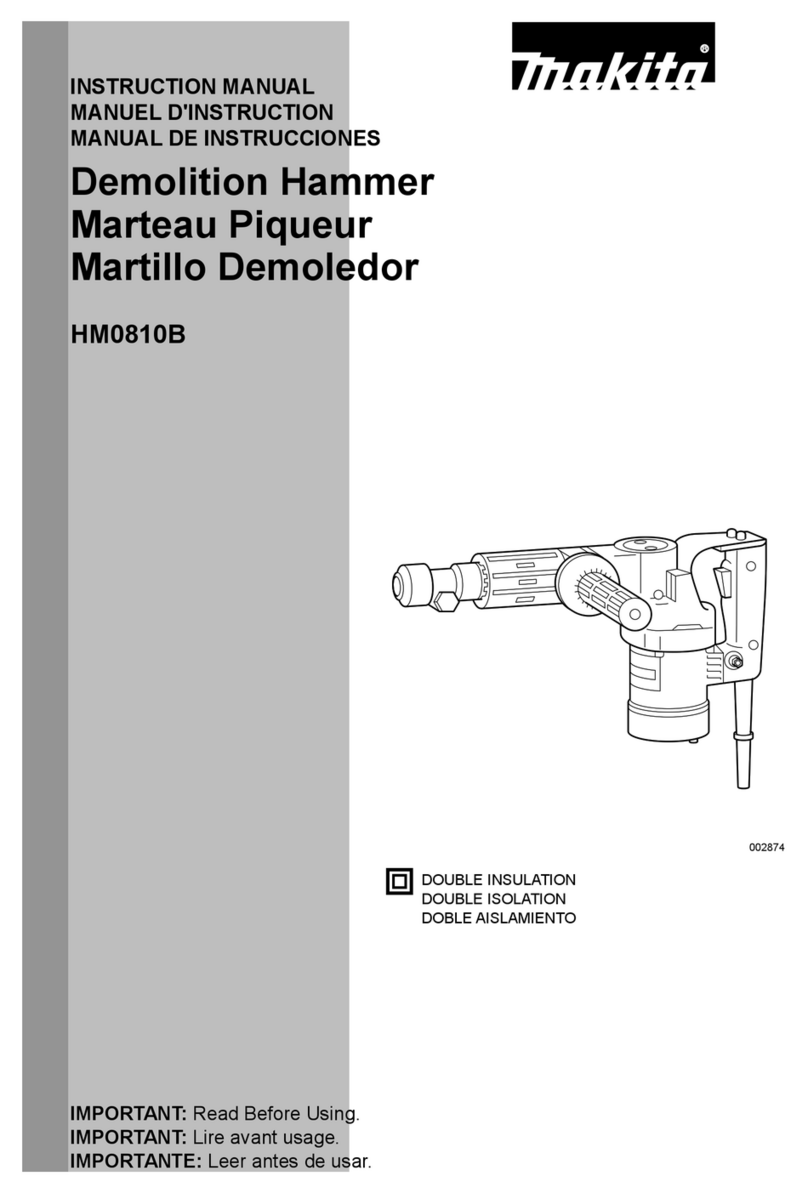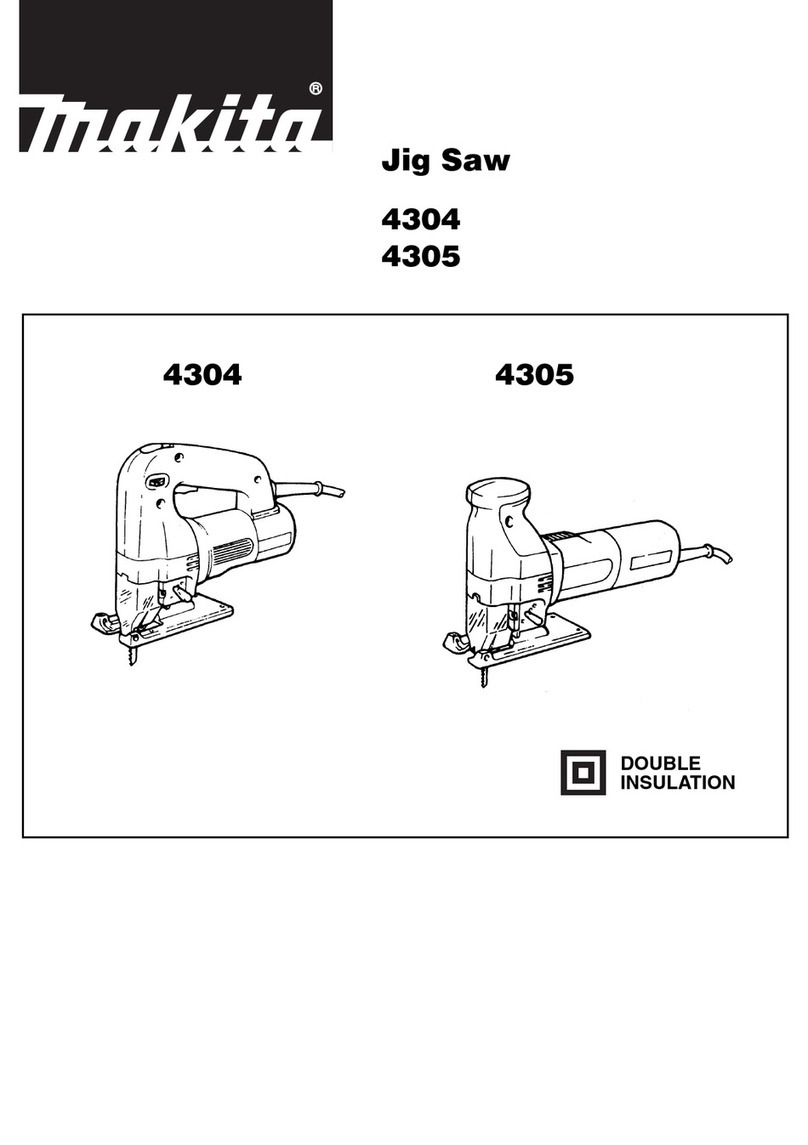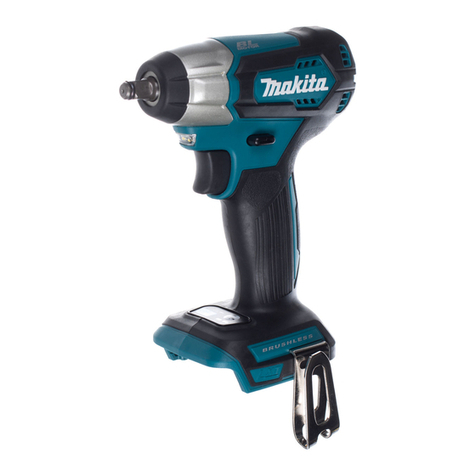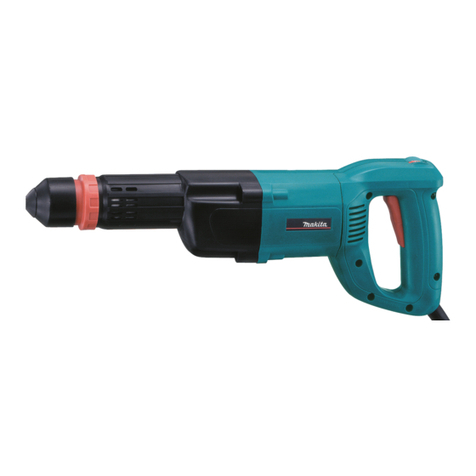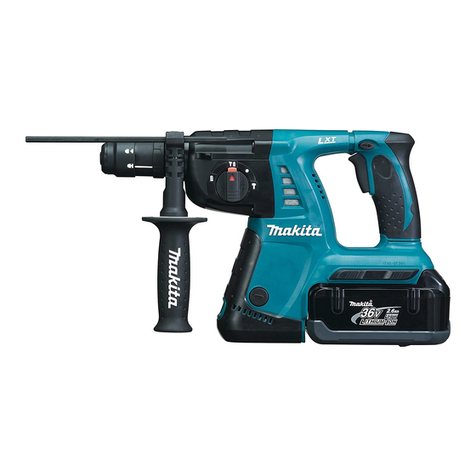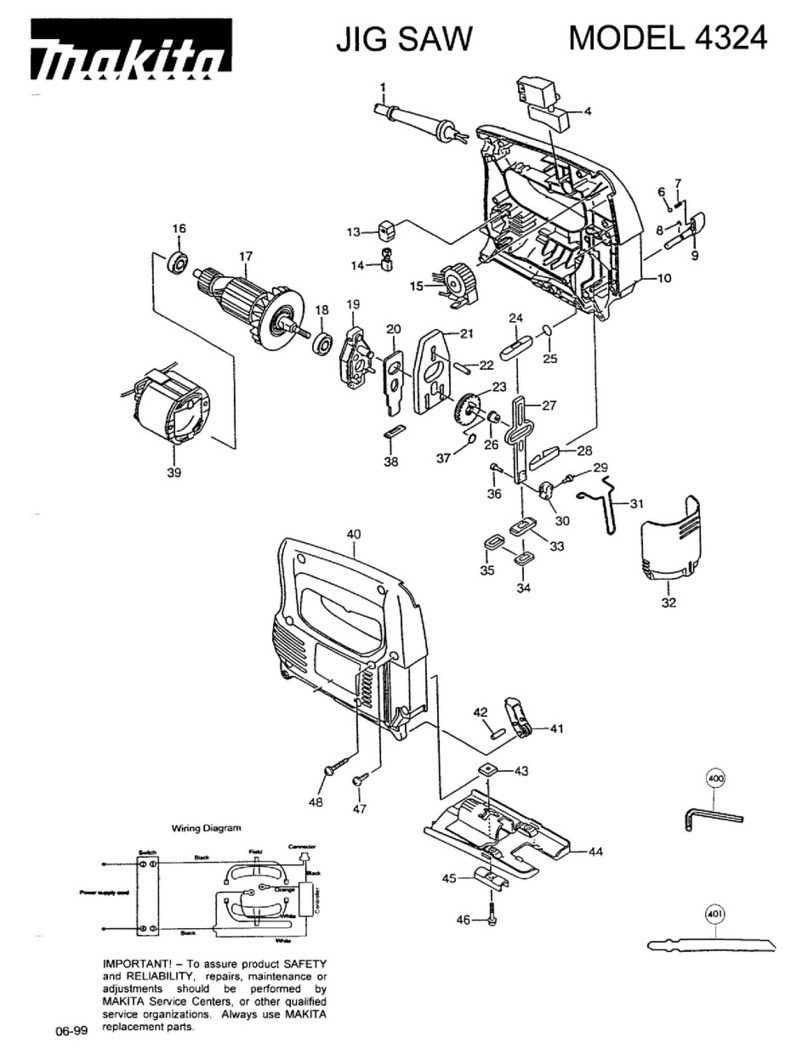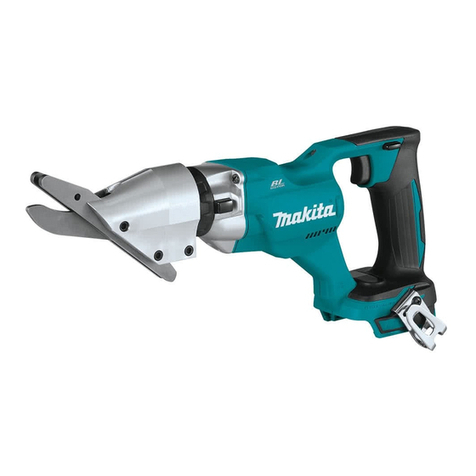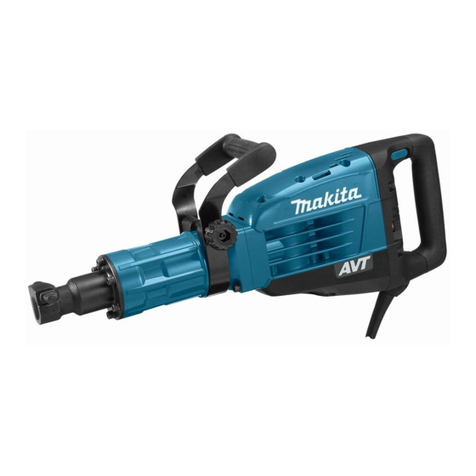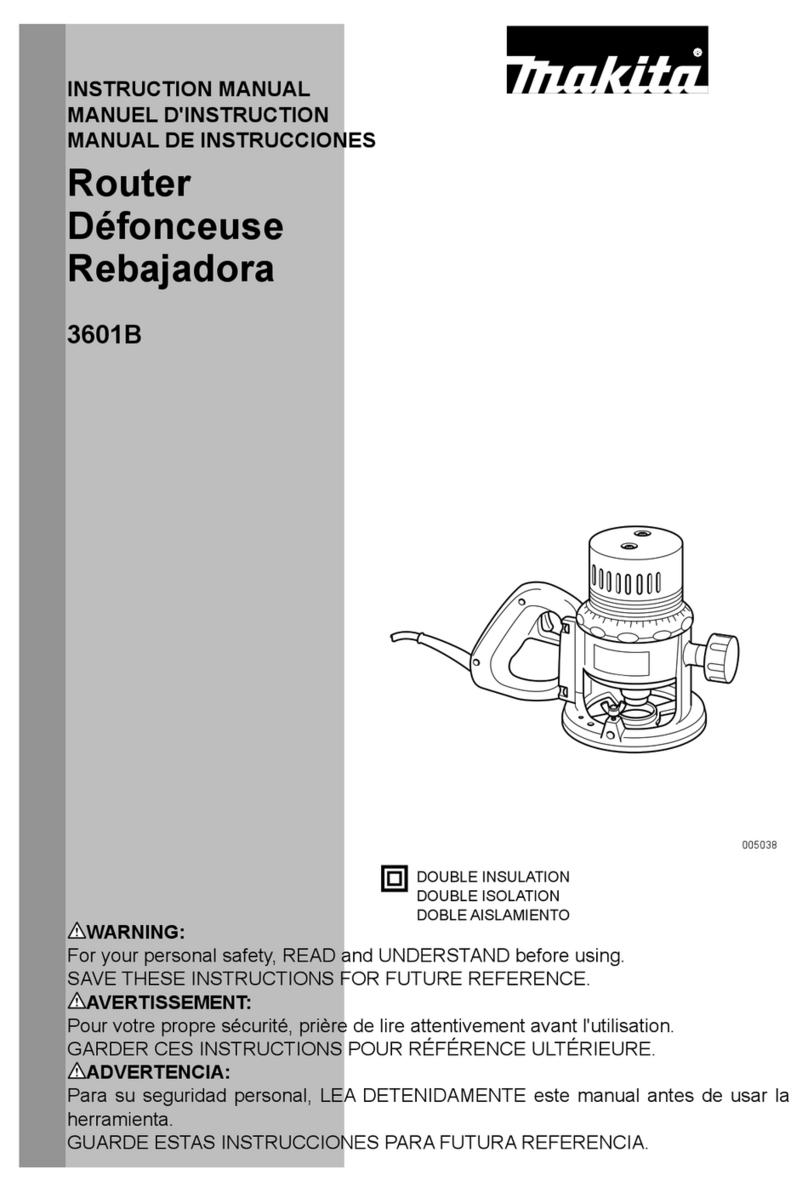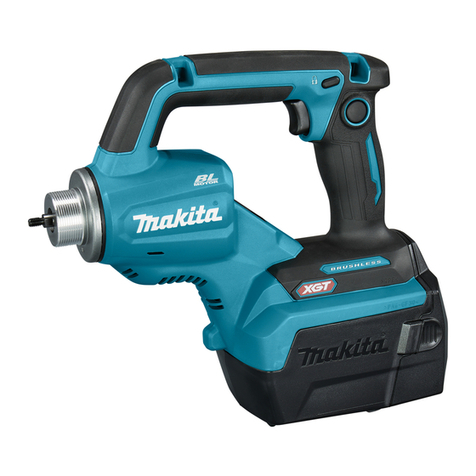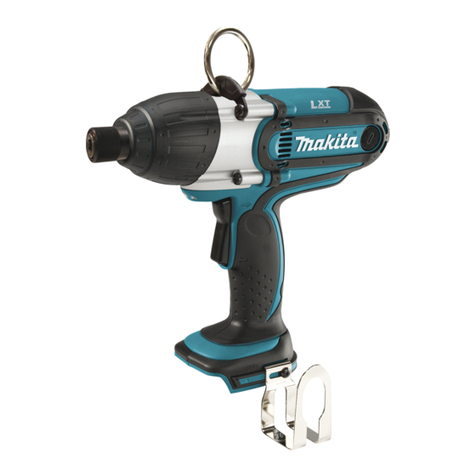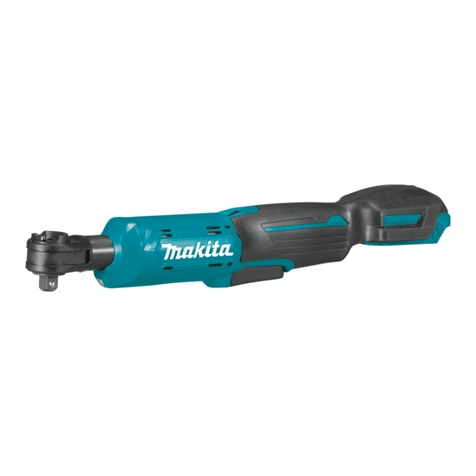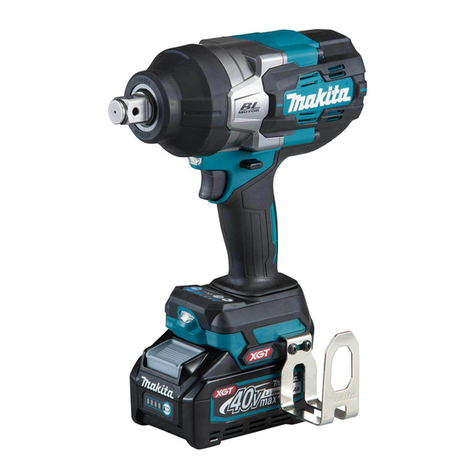2
Operation Makita SK102
D
EN
F
I
E
P
NL
FIN
PL
SK
HR
SR
RUS
BG
RO
Display
Refer to drawing {B}
4 Laser crosshairs
5 Laser line horizontal
6 Laser line vertical
7LockON
8 Pulse/Powersave mode ON
9 Battery voltage too low
Switching on/off
ON: Briefly press the ON - key {B,1}.
OFF: Press and hold down the OFF- key {B,1}.
Laser functions
Pressing the ON-key {B,1} activates the following
laser functions:
By pressing the ON-key {B,1} again, the previous
function status is repeated.
Self leveling and Lock-functions
The instrument automatically levels itself within the
specified grade range (Refer to "Technical data") .
Press the Lock switch {B, 3} in order to transport and
tilt the instrument beyond the self-leveling range.
When locked, the pendulum is fixed and the self-
leveling function is deactivated.
Pulse/Power mode
The instrument is equipped with a Power mode.
Switching on the instrument activates the Power
mode and the laser lines are bright and highly visible.
If the high visibility of the laser lines is not required
and if in addition energy should be saved, then
pressing the Pulse key {B, 2} activates the Pulse
mode.
To be able to detect the laser lines over long
distances (> 20 m) or in unfavorable lighting condi-
tions, a laser detector can be used. In Pulse mode,
the laser beam is also recognized over large distances
by the detector.
(Laser detector refer to accessories)
Applications
Examples of applications can be found on the outside
of the back cover of this User Manual.
Pressing the ON -
key {B, 1} activates
1 x laser crosshairs (horizontal
and vertical laser line)
2 x horizontal laser line
3 x vertical laser line
